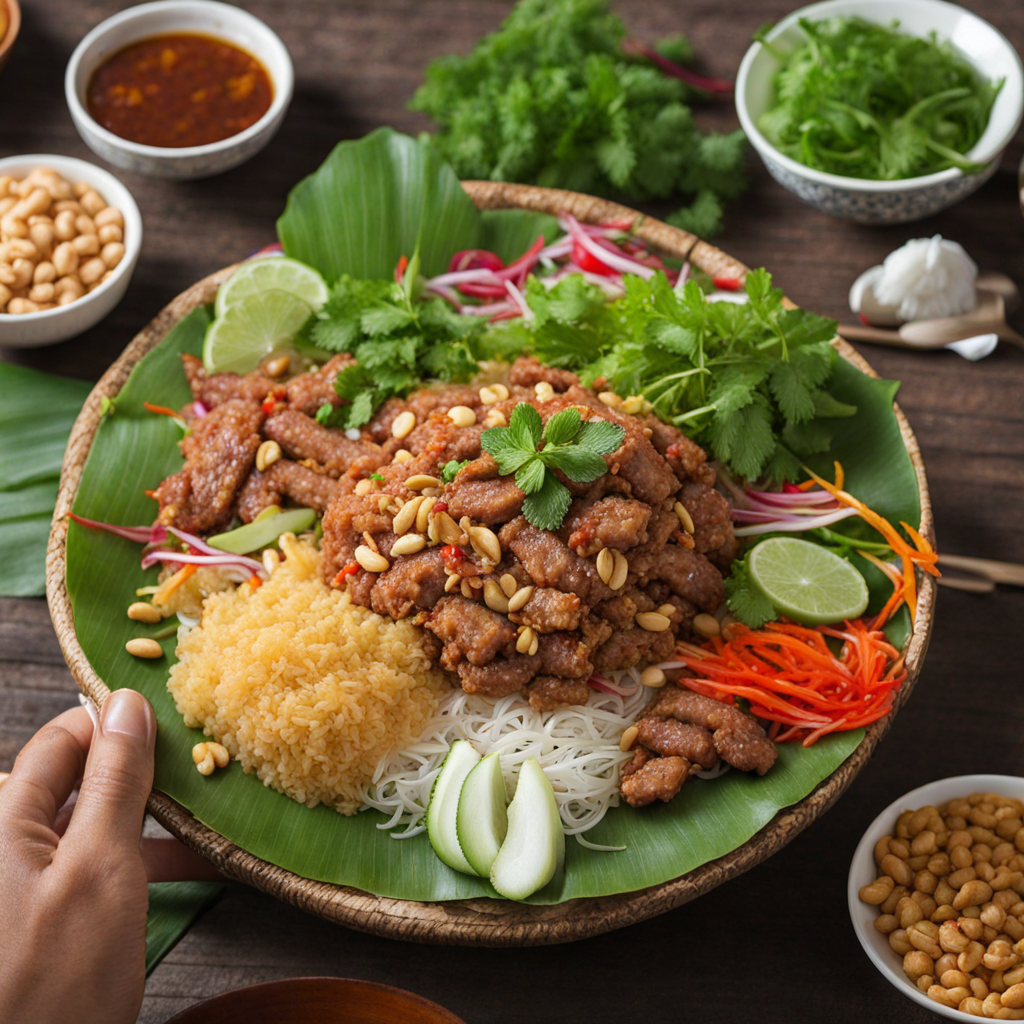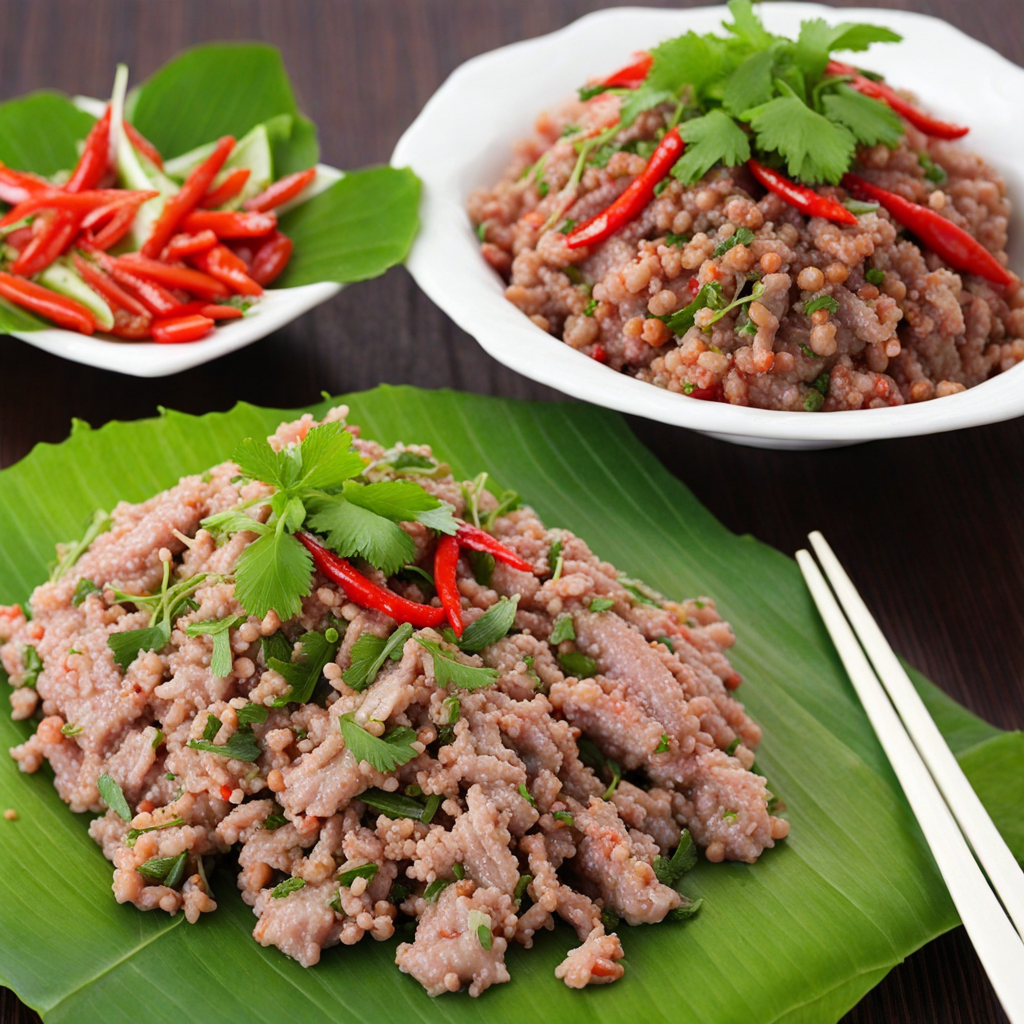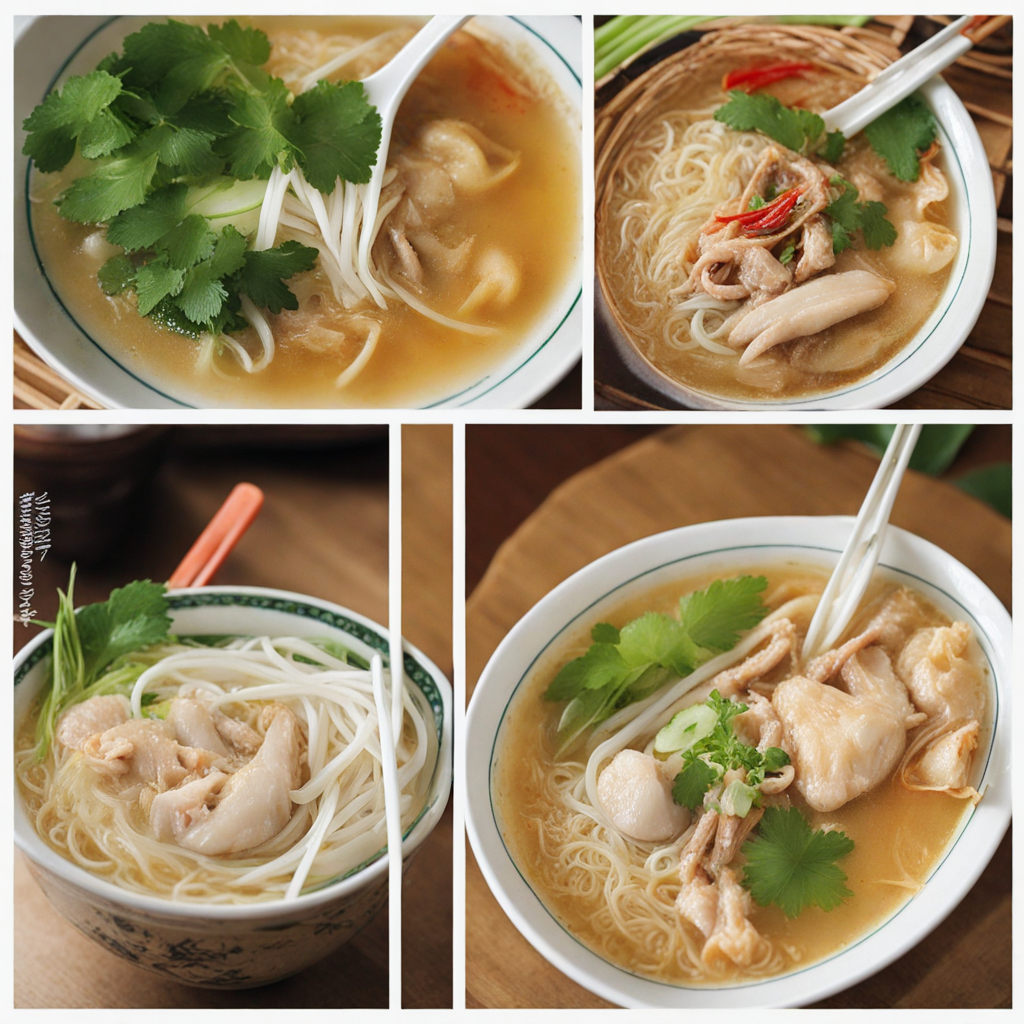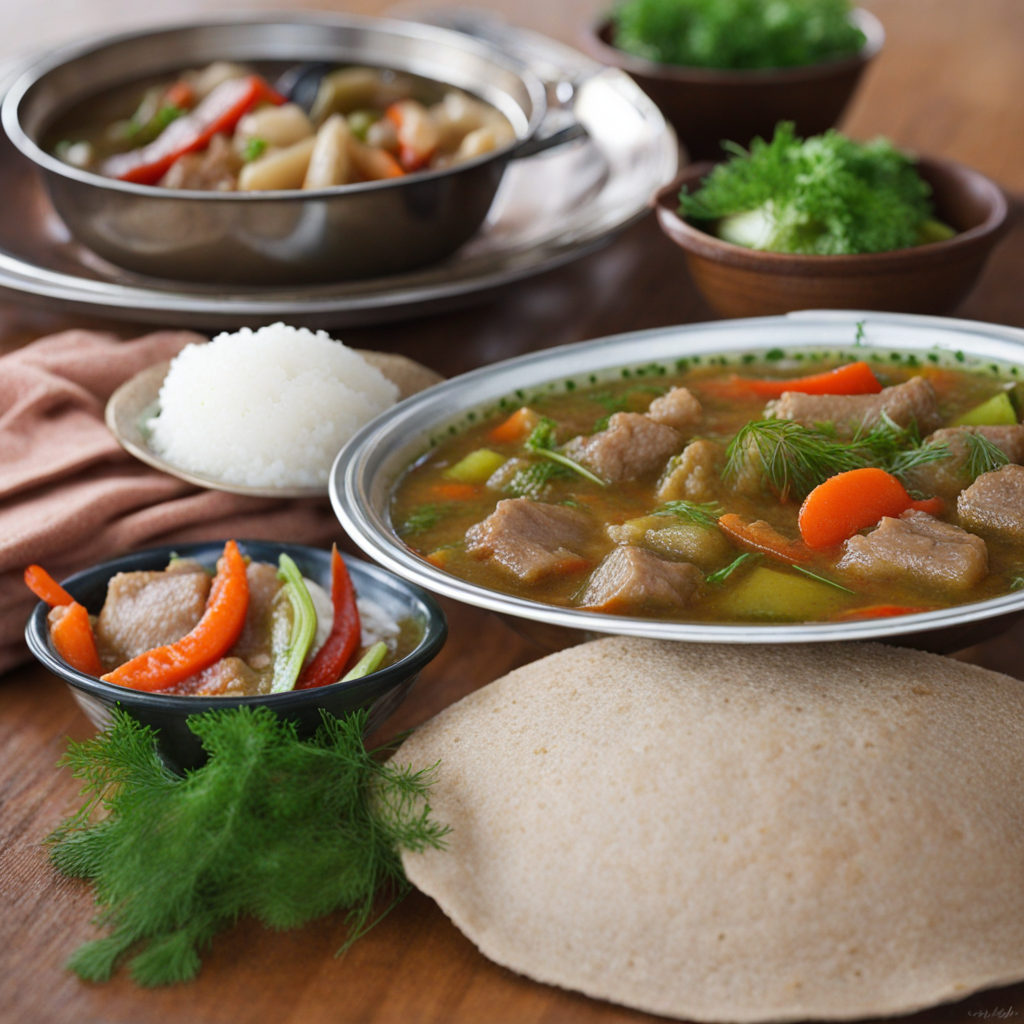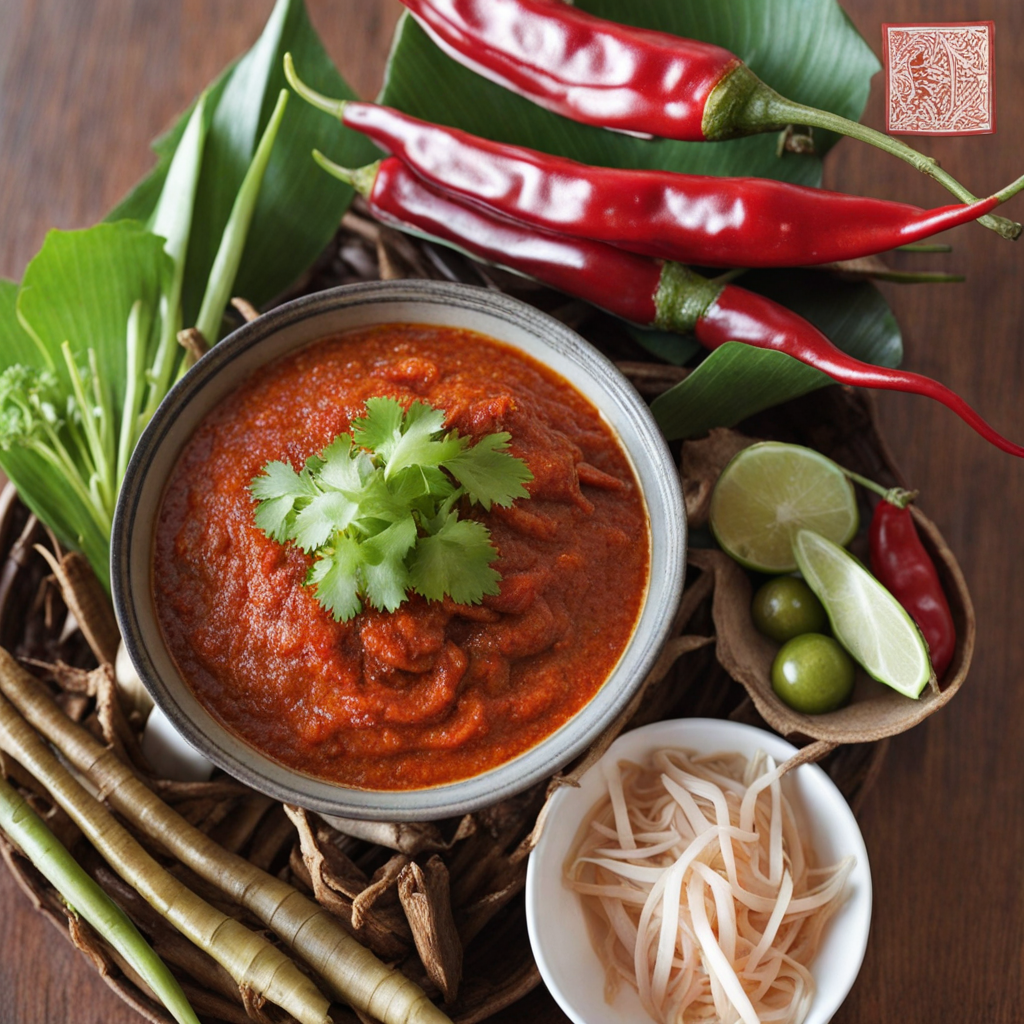Nam Khao
Nam Khao is a vibrant and flavorful dish from Laos that showcases the country's rich culinary heritage. This delightful dish primarily features crispy rice balls, which are made from fermented sticky rice that is deep-fried until golden and crunchy. The texture is a delightful contrast between the outer crispiness and the chewy, fragrant rice within. This unique preparation sets the stage for a dish that is both satisfying and addictive, making it a favorite among locals and adventurous food enthusiasts alike. Accompanying the rice balls is a medley of fresh herbs, vegetables, and proteins, typically including ingredients like minced pork, herbs such as cilantro and mint, along with crunchy peanuts and lime. The dish is often spiced up with a zesty dressing made from lime juice, fish sauce, and chilies, which adds a bright, tangy flavor that perfectly complements the rich, savory notes of the fried rice. The combination of textures and flavors creates a harmonious balance, making each bite a delightful explosion of taste. Nam Khao is not just a dish; it's an experience that brings together the essence of Lao cuisine. Often served as a salad, the dish is typically enjoyed with a side of fresh vegetables, such as lettuce, cucumber, and herbs, allowing diners to wrap the crispy rice balls and fillings in fresh greens. This interactive element of eating adds a fun twist to the meal, making it a perfect option for sharing with friends and family. Whether enjoyed at a local eatery in Laos or made at home, Nam Khao is sure to leave a lasting impression on anyone looking to explore new and exciting flavors.
How It Became This Dish
Origin of ນ້ຳເຂົ້າ ນ້ຳເຂົ້າ, or "nam khao," is a traditional dish from Laos that showcases the rich culinary heritage of the region. The origins of this dish can be traced back to the rural communities of Laos, where rice is a staple food and a fundamental part of daily life. The word "nam" translates to "water" or "sauce," while "khao" means "rice." This dish typically consists of fried rice balls mixed with various ingredients, including herbs, spices, and often, fresh vegetables or meat, creating a harmonious blend of flavors and textures. Historically, rice cultivation in Laos dates back over 2,000 years, with the fertile lands along the Mekong River providing a suitable environment for growing rice. The Laotian people developed various methods for cooking and preserving rice, laying the foundation for dishes like nam khao. The dish likely originated as a way to use leftover rice, a common practice in many cultures worldwide, but it evolved into a beloved dish that represents the ingenuity and resourcefulness of Lao cuisine. Cultural Significance The cultural significance of ນ້ຳເຂົ້າ extends beyond its delicious taste. It is often served during gatherings and celebrations, symbolizing community and togetherness. In Laos, food is an integral part of social interactions, and dishes like nam khao bring people together. The preparation of this dish can be a communal activity, where family members and friends come together to cook and share stories, strengthening bonds and fostering a sense of belonging. In Lao culture, food is not merely sustenance; it is a reflection of identity and heritage. The ingredients used in nam khao often include local produce and meats, showcasing the region's agricultural diversity. The dish varies from one locality to another, with different families adding their unique touch, making it a canvas for personal expression and a way to pass down culinary traditions from generation to generation. Development Over Time As Laos has evolved, so too has the dish of ນ້ຳເຂົ້າ. The traditional recipe has seen various adaptations that reflect changes in lifestyle and access to ingredients. In urban areas, for instance, you may find more elaborate versions that include additional proteins such as chicken or shrimp, while rural versions might stick to simpler, more rustic components. This adaptability has allowed nam khao to remain relevant in the fast-paced modern world while still honoring its roots. The globalization of food culture has also influenced the preparation and presentation of nam khao. As Lao cuisine gains popularity beyond its borders, chefs and home cooks alike experiment with new flavors and techniques. Fusion cuisine has emerged, with variations that incorporate international ingredients while maintaining the essence of the dish. This evolution highlights the dynamic nature of food, where tradition meets innovation, allowing dishes like nam khao to thrive in contemporary culinary landscapes. Regional Variations Within Laos, there are distinct regional variations of ນ້ຳເຂົ້າ that reflect the local ingredients and cooking styles. In the northern regions, for example, nam khao might incorporate more wild herbs and foraged ingredients, emphasizing the connection to the natural environment. In contrast, southern versions may feature bolder flavors and a wider array of spices, influenced by neighboring Thai and Vietnamese cuisines. Each variation tells a story of the land and its people, revealing how geography and culture intertwine. The use of local herbs such as lemongrass, kaffir lime leaves, and mint not only enhances the flavor but also connects the dish to the region's agricultural practices. This deep-rooted relationship between food and land is a testament to the importance of sustainable farming and preserving traditional agricultural knowledge. Modern Popularity In recent years, ນ້ຳເຂົ້າ has gained recognition beyond Laos, making its way onto menus in Southeast Asian restaurants around the world. Food enthusiasts are increasingly drawn to the bold flavors and unique textures of this dish. Its popularity can be attributed to the growing interest in authentic ethnic cuisines and the appreciation for dishes that are both satisfying and rich in cultural history. Social media has played a significant role in the dissemination of Lao cuisine, with food bloggers and influencers showcasing nam khao and other traditional dishes. The visual appeal of the vibrant ingredients and the engaging stories behind the recipes have captivated audiences, raising awareness of Lao culinary traditions. As more people become acquainted with the flavors of Laos, nam khao stands as a proud ambassador of its culinary heritage. Conclusion: A Dish of Resilience The journey of ນ້ຳເຂົ້າ reflects the resilience and adaptability of Lao cuisine. From its humble beginnings as a way to utilize leftover rice to its status as a cherished dish enjoyed by many, nam khao embodies the spirit of the Laotian people. It serves as a reminder that food is not just about nourishment but also about culture, community, and connection. As the world continues to change, the legacy of ນ້ຳເຂົ້າ remains strong. It is a dish that not only nourishes the body but also feeds the soul, encapsulating the history and traditions of Laos in every bite. The ongoing evolution of this dish ensures that it will continue to be a beloved part of Laotian cuisine for generations to come.
You may like
Discover local flavors from Laos


